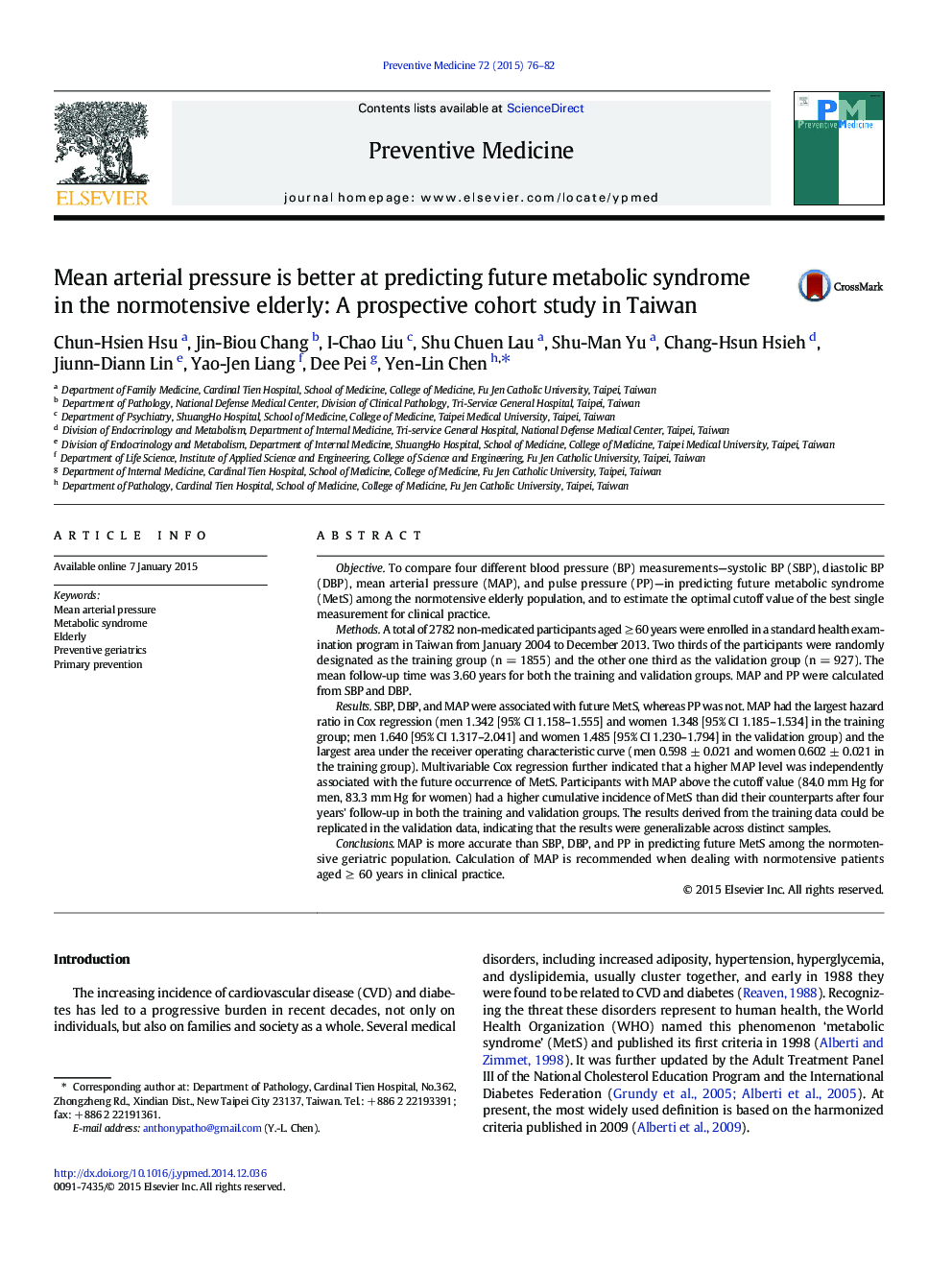| کد مقاله | کد نشریه | سال انتشار | مقاله انگلیسی | نسخه تمام متن |
|---|---|---|---|---|
| 3100387 | 1581642 | 2015 | 7 صفحه PDF | دانلود رایگان |
• MAP is more accurate in predicting future MetS among the geriatric population.
• MAP higher than the cutoff value indicates a higher risk of developing MetS.
• The cutoff value of MAP is 84.0 for men and 83.3 mm Hg for women, respectively.
• Results derived from the training data could be replicated in the validation data.
• Calculating MAP is recommended in the normotensive elderly over 60 years old.
ObjectiveTo compare four different blood pressure (BP) measurements—systolic BP (SBP), diastolic BP (DBP), mean arterial pressure (MAP), and pulse pressure (PP)—in predicting future metabolic syndrome (MetS) among the normotensive elderly population, and to estimate the optimal cutoff value of the best single measurement for clinical practice.MethodsA total of 2782 non-medicated participants aged ≥ 60 years were enrolled in a standard health examination program in Taiwan from January 2004 to December 2013. Two thirds of the participants were randomly designated as the training group (n = 1855) and the other one third as the validation group (n = 927). The mean follow-up time was 3.60 years for both the training and validation groups. MAP and PP were calculated from SBP and DBP.ResultsSBP, DBP, and MAP were associated with future MetS, whereas PP was not. MAP had the largest hazard ratio in Cox regression (men 1.342 [95% CI 1.158–1.555] and women 1.348 [95% CI 1.185–1.534] in the training group; men 1.640 [95% CI 1.317–2.041] and women 1.485 [95% CI 1.230–1.794] in the validation group) and the largest area under the receiver operating characteristic curve (men 0.598 ± 0.021 and women 0.602 ± 0.021 in the training group). Multivariable Cox regression further indicated that a higher MAP level was independently associated with the future occurrence of MetS. Participants with MAP above the cutoff value (84.0 mm Hg for men, 83.3 mm Hg for women) had a higher cumulative incidence of MetS than did their counterparts after four years' follow-up in both the training and validation groups. The results derived from the training data could be replicated in the validation data, indicating that the results were generalizable across distinct samples.ConclusionsMAP is more accurate than SBP, DBP, and PP in predicting future MetS among the normotensive geriatric population. Calculation of MAP is recommended when dealing with normotensive patients aged ≥ 60 years in clinical practice.
Journal: Preventive Medicine - Volume 72, March 2015, Pages 76–82
